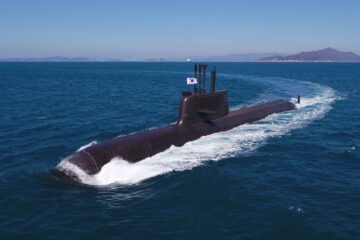GE press release
Launched in August 2020, the NIC is a centre of excellence for Polar technologies and Arctic expertise. It reflects Davie’s role as Canada’s icebreaking partner and builder of the new icebreaker fleet, under the National Shipbuilding Strategy (NSS). This will create thousands of good jobs, a vibrant world-class maritime cluster in Québec and drive exports of Canadian innovation.
Canada’s current Polar Icebreakers are very old. CCGS Louis S. St-Laurent is deep into its sixth decade and CCGS Terry Fox is fast approaching 40 years in service. A new Polar class will enable Canada to maintain a continuous Arctic presence benefiting all Canadians, including the northern communities, enabling ice-choked trade, supporting Arctic sovereignty and protecting the Polar environment.
GE’s Power Conversion business offer a full spectrum of best-in-class integrated electrical propulsion and power systems, including its SEAJET podded propulsion units. The ice-class range of SEAJET – a technology jointly developed with AETC Sapphire – is available for Polar Class notation, with a power range of 7.5MW to 15MW. In the SEAJET system the electric motor is housed in the hull mounted pod and directly connected to the propellor, freeing up cargo and operational space in the ship.
Manoeuvrability and efficiency are greatly improved, and total fuel consumption and exhaust emissions are reduced. Customizable for different ship types, with simplified installation, SEAJET pods can enhance performance in an array of commercial, offshore marine, and ice breaking ships.
Davie is fully capable and ready to begin work on the Polar today. Davie is Canada’s only mega-yard with 50% of total capacity, able to build up to eight large, complex ships simultaneously. The 150-metre Polar will be easily accommodated in Davie’s 351-metre Champlain Dry Dock. An integrated build schedule would ensure Polar would complement other Davie programs such as the six Program Icebreakers (PIBs) it is set to build under the NSS. In fact, it would facilitate a steep learning curve and economies of scale to significantly benefit both programs by mitigating cost, schedule and performance risks.
Moreover, a recent analysis conducted for Davie by Deloitte, drawing on ISED and StatCan numbers, concluded that building Polar Icebreakers at Davie will generate up to 2,500 well-paid jobs, engage over 1,300 suppliers (with 900+ in Québec) and contribute up to $2.5bn to the Canadian economy.
GE joins Vard and Serco as partner in Davie’s Polar program. Davie expects to soon announce steel, critical systems and other service partners.






